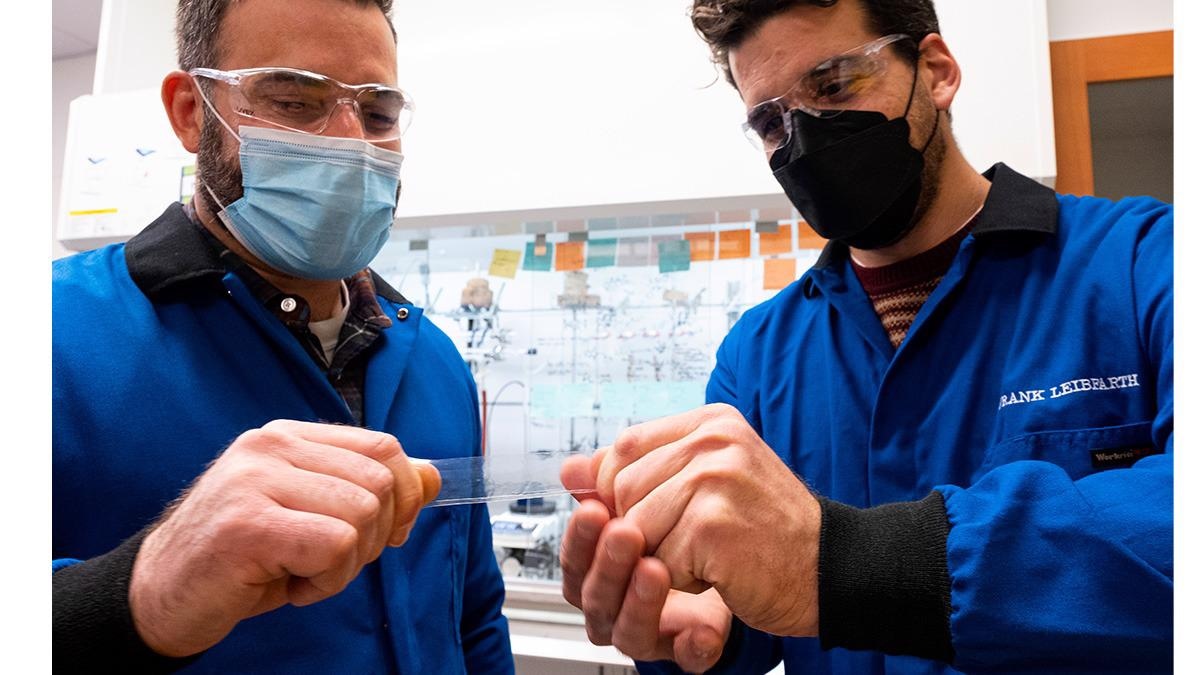Reviewed by Alex SmithFeb 8 2022
According to a 2020 study, more plastic trash is generated by the United States than any other country in the world—approximately 46.3 million tons of it, which can be interpreted as 287 pounds per person annually.
 Carolina chemists have come up with a way to chemically modify common polymers, the building blocks for plastic used in grocery bags, bottles, and packaging, to make them easier to recycle. Image Credit: Jon Gardiner/UNC-Chapel Hill.
Carolina chemists have come up with a way to chemically modify common polymers, the building blocks for plastic used in grocery bags, bottles, and packaging, to make them easier to recycle. Image Credit: Jon Gardiner/UNC-Chapel Hill.
The 9% rate of recycling achieved by the country will not suffice. What is the reason for such a low rate? The chemistry of present-day plastics makes them problematic to recycle. Even thermoplastics that can be melted down deteriorate with each re-use, which creates an obstacle to recycling—economics. There is simply no profit incentive.
A team of chemists at the University of North Carolina at Chapel Hill has discovered a technique to break down plastics to develop a new material that is more robust and tougher than the original—meaning it is in theory more valuable.
Our approach views plastic waste as a potentially valuable resource for the production of new molecules and materials. We hope this method could drive an economic incentive to recycle plastic, literally turning trash into treasure.
Frank Leibfarth, Assistant Professor of Chemistry, College of Arts and Sciences, University of North Carolina-Chapel Hill
Leibfarth and UNC-Chapel Hill professor Erik Alexanian, who is an expert in chemical synthesis, illustrates the method that could end the loop on plastic recycling in the journal Science.
Carbon-hydrogen bonds are some of the most robust chemical bonds found in nature. The stability renders it hard to convert natural products into medicines and tough to recycle commodity plastics.
But by altering the carbon-hydrogen bonds that are typical in polymers - the building blocks for advanced plastic used in soda and water bottles, grocery bags, auto parts, food packaging, and toys - the service life of polymers could be extended beyond single-use plastic.
With a recently identified reagent that could remove hydrogen atoms from medicinal compounds and polymers, the Carolina researchers could create new bonds in places formerly considered unreactive.
The versatility of our approach is that it enables many valuable transformations of carbon-hydrogen bonds on such a wide range of important compounds.
Erik Alexanian, Professor, University of North Carolina-Chapel Hill
Turning Trash into Treasure
The Leibfarth Group at Carolina is dedicated to engineering polymers that are more functional, more sustainable, and smarter.
With the backing of the NC Policy Collaboratory, the team created a super-absorbent polymer that could remove hazardous chemicals from drinking water. Scientists planned to use the innovative method to help turn hard-to-recycle plastic waste into a high-value group of polymers.
They began with plastic foam packaging used to guard electronics during transportation that otherwise gets dumped in landfills. Samples of post-consumer foam were supplied by High Cube LLC, a Durham, North Carolina, recycling company. The foam is composed of a low-density plastic known as a commercial polyolefin.
By selectively extracting hydrogen atoms from polyolefin, the chemists formulated a way to extend the life of the single-use plastic into a high-value plastic called an ionomer. Widely used ionomers are Dow’s SURLYNTM, a go-to material employed in a wide range of food packaging.
The majority of recycled plastic is “downcycled” into lower quality products such as polyester clothing or carpet that may still get dumped in landfills. Cast-off plastics in waterways jeopardize the life of sea animals such as turtles which may assume ocean plastic to be food.
But if the chemistry can be continually used on polymers to help recycle them again and again, “it could change the way we look at plastic,” Leibfarth said.
The co-authors of the study include Timothy Fazekas, Jill W. Alty, Eliza K. Neidhart, and Austin S. Miller. The study was funded by the National Institute of General Medical Sciences, the Air Force Office of Scientific Research, the National Science Foundation, and the Department of Chemistry.
Journal Reference:
Fazekas, T. J., et al. (2022) Diversification of aliphatic C–H bonds in small molecules and polyolefins through radical chain transfer. Science. doi.org/10.1126/science.abh4308.